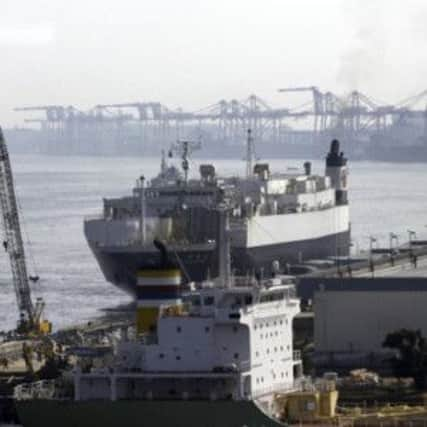Hitachi shippingtycoon was cityman


The founder of the Hitachi Zosen Group - one of the biggest shipbuilders in the world in its day and now a world leader in large scale engineering, including incinerators, tsunami defence and tunnelling - was a Londonderry man.
Edward Hazlett Hunter was born in the city in 1843 but emigrated to Yokohama in 1865 at the tender age of just 22.
Advertisement
Hide AdAdvertisement
Hide AdBefore getting into ship-building the Londonderry man founded Edward Hazlett Hunter and Co., in Kobe in 1874 trading largely in machine tools and paints.
He then went on to indulge in his first bout of war-profiteering during the Satsuma Rebellion in 1877, when the money started rolling in via military contracts.
Then in 1881 he completed the construction of his first shipyard, the Osaka Ironworks (Osaka Tekkosho), which was also known amongst English-speakers as the Japaness.
Mr Hunter was undeterred by the lack of state support offered to the fledgling firm despite the largesse shown to rivals.
Advertisement
Hide AdAdvertisement
Hide AdHe forged ahead as a private enterprise employing 200 workers initially and rapidly expanding once again thanks to the military orders that streamed in as a result of the First Sino-Japanese war in 1894. In 1895 his son Ryutaro Hunter took over the wheel.
According to Janet Hunter and S. Sugiyama, experts on the history of Anglo-Japanese trade: “Hirano Ryutaro (1871–1936) (later Hanta Ryutaro), who had been educated in civil engineering at the University of Glasgow, took over the business.”
Ryutaro Hunter benefitted from a new law passed in 1896 to encourage ship-building in Japan and constructed a new larger scale shipyard in Osaka in 1899.
Incidentally, this was shortly after his father chipped in with a group of foreign settlers to buy the Oriental Hotel in Kobe in 1897.
Advertisement
Hide AdAdvertisement
Hide AdAfter the turn of the century Ryutaro kept things on an even keel and capitalised on the Russo-Japanese War by putting on orders.
Depression followed that conflict but the firm sailed through the doldrums producing steel fishing boats and dredgers and by 1911 had seven shipyards and employed 4,800.
Hunter and Sugiyama explain: “In the period from 1888 until 1913 it had built 57 cargo-passenger and cargo ships, three whalers, 48 trawlers, 35 dredgers and three naval vessels.”
The First World War resulted in another boom but the conflict also marked the death of Edward Hazlett Hunter at the age of 74 in 1917.
Advertisement
Hide AdAdvertisement
Hide Ad“After this period it passed through the hands of Osaka Shosen, Kuhara Kogyo and Nihon Sangyo and in 1936 came under the management of Hitachi Seisakusho, being given the name of Hitachi Zosen KK in 1943,” advise Hunter and Sugiyama.
And according to a report in this newspaper in 1962 war was again becoming very profitable for the firm around the time of the Second World War.
The Sentinel reported that in 1939, two years after the outbreak of Second Sino-Japanese War in 1937, the company was building a record 230 ships per year.
“Rapid recovery and prosperity followed the 1939-1945 War in which almost all the facilities of all the shipyards were burnt out, down or destroyed,” the Sentinel reported.
Advertisement
Hide AdAdvertisement
Hide AdThe firm continued to do extremely well in the middle of the last century as Japan replaced Great Britain as the world’s biggest shipbuilder in 1956.
“In 1957 the company launched 26 ships and aggregating 386k tonnes and took second place amongst the ship-building yards of the world,” the Sentinel explained.
Fittingly, twenty-five Japanese workers employed by Hitachi Zosen made the pilgrimage to Mr Hunter’s hometown in 1962 to have a look around DuPont’s neoprene facility here. They were charged with building another one in Japan.
This April Edward Hazlett Hunter’s brainchild will be 132. Recent Hitachi Zosen achievements include the completion of Japan’s largest gasification melting furnace in Toyoda City and the receipt of an order for the world’s largest coal-to-liquids (CTL) reactor in South Africa in 2007.
Advertisement
Hide AdAdvertisement
Hide AdIn 2011 it received an order for one of the world’s largest tunnel boring machine and the company’s first ever marine vessel equipped with Pre-Turbo SCR system achieved compliance with Tier III NOx emission standards. The shipping giant was worth a whopping 45,442,365,005 yen (£315m) at the end of last March.